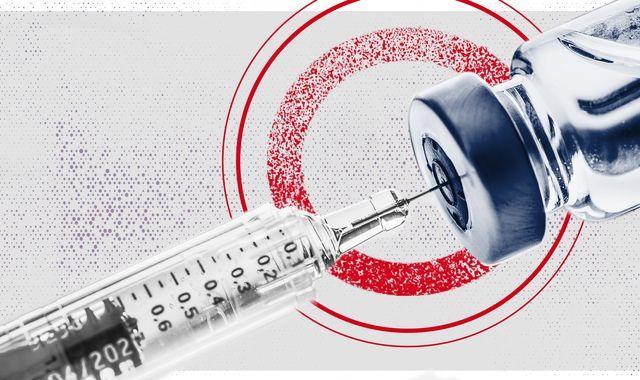Photo courtesy UK.Yahoo.com.
All we have to do is look at high-quality epidemiological data to get to the truth — COVID-19 vaccines aren’t preventing COVID or its transmission, and they aren’t preventing severe illness or death.
“Our vaccines are working exceptionally well,” Dr. Rochelle Walensky told CNN’s Wolf Blitzer. “They continue to work well for Delta, with regard to severe illness and death — they prevent it. But what they can’t do anymore is prevent transmission.”
Thus spoke Centers for Disease Control and Prevention (CDC) Director Walensky, in an Aug. 5, 2021 interview with CNN’s Wolf Blitzer.
Walensky may have believed the vaccines prevented severe illness and death then — but she cannot possibly believe that now.
That was eight months ago. The vaccines had barely been rolled out eight months earlier.
Now we have nearly 16 months of observation and what have we found? What has Walensky’s CDC revealed that contradicts her glib patter?
While there are thousands of articles discussing COVID-19 vaccines, I have come to agree with professor Tom Jefferson that in order to arrive at the truth, all we need to look at are epidemiological data of very high quality.
In other words:
- We want raw, official data, before it has been subjected to adjustments or algorithms that “smooth” the data.
- We want large populations.
- We want the most solid endpoints, such as hospitalizations or deaths.
Over the past few days I have identified and analyzed such studies on my blog (here and here) and on Substack. The data are from official sources, published by the U.S. CDC and the UK’s Office of National Statistics.

The data were collected from June to November 2021, before the Omicron wave appeared.
The Defender reported on this data two months ago:
- Vaccinated Californians and New Yorkers were three times more likely to develop COVID than those who had prior immunity and were unvaccinated.
- Vaccinated Californians had a higher rate of hospitalizations (severe illness) than those who were unvaccinated but had prior immunity. (New York did not provide hospitalization data.)
- The vaccine failures in this huge study cannot be blamed on Omicron, because the data were collected during Delta.
The UK data from its Office of National Statistics, published March 16, extend from Jan. 1, 2021, through Jan. 31, and include both the Delta and Omicron waves.
The data have been age-standardized. The database includes 86% of all deaths in England (which has a population of 56 million) during the 13 months described.
The graphs reveal that being doubly vaccinated protected the English against death for most of 2021.
However, over last December and January (corresponding to the Omicron wave), COVID death rates in the doubly vaccinated but unboosted were higher than in those who had never been vaccinated. This was true for the population as a whole.
If you break down the deaths by age group, the vast majority of COVID deaths occurred in the over-70 population.
While deaths from COVID in younger people were trending up as the time since vaccination increased, by Jan. 31, 2022, they had not exceeded COVID deaths in the unvaccinated.
Boosters did appear to “top up” COVID immunity for a time in all age groups, reducing death rates. But one wonders how long it will take before this effect wears off?
What is the bottom line?
High-quality, official data obtained on more than 30 million American adults and 48 million residents of England incontrovertibly reveal that:
- Natural immunity was three times better at preventing cases than vaccination alone, even before Omicron.
- Natural immunity was somewhat better at preventing serious illness, measured as hospitalizations, than vaccination alone, even before Omicron.
- Boosters (a third shot) reduced the death rate in England of those vaccinated against Omicron, but the benefit was starting to drop off by January 2022.
- Overall, England’s unvaccinated population had a lower COVID death rate during the Omicron wave than the COVID death rate in its doubly vaccinated population.
- Walensky and the other so-called experts are wrong. Natural immunity provided three times more protection against infection (and therefore against transmission) than did double vaccination, even before Omicron. After Omicron, vaccine efficacy was even worse.
- While vaccination provided some protection against severe illness (measured as hospitalizations) during the Delta wave, it provided less protection than natural immunity.
- The vast majority of COVID deaths occur in those over 70. In this age group, the doubly vaccinated died from COVID at higher rates during Omicron than the unvaccinated.

Please “like”, comment, share with a friend, and donate to support The Standard on this page. Become a Patron!




 RSS - Posts
RSS - Posts